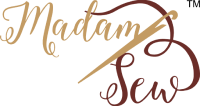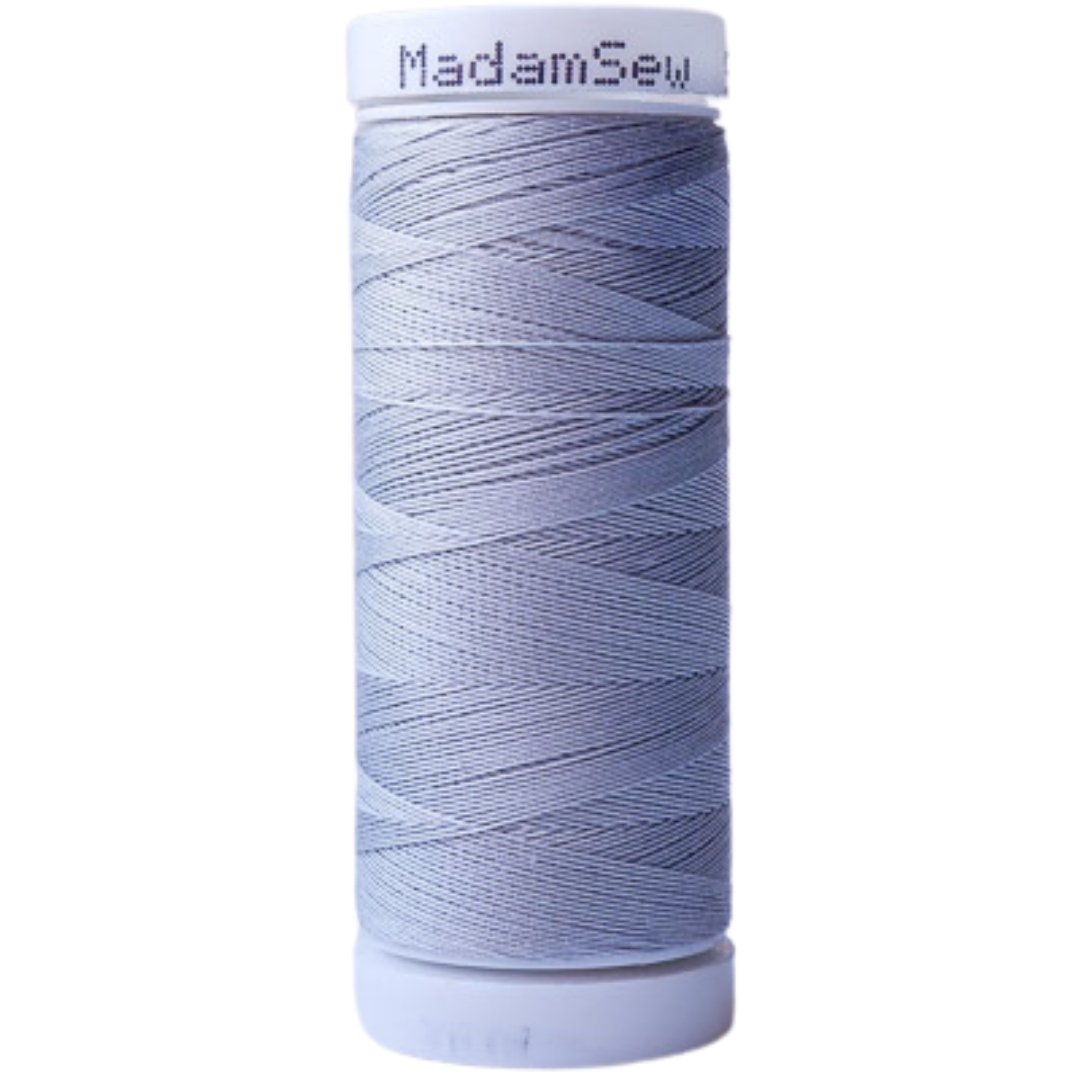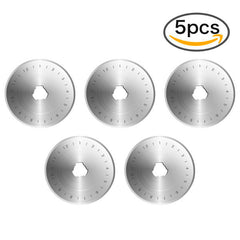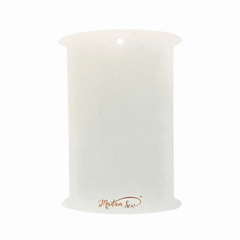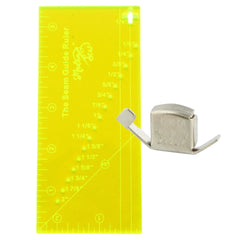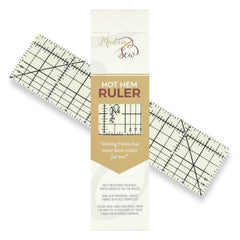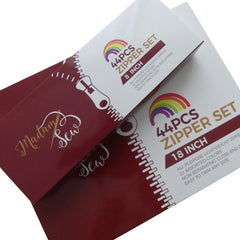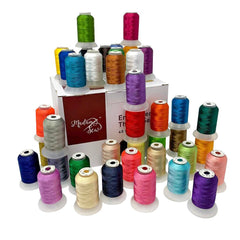Everything You Need to Know About The Zigzag Stitch
A zigzag stitch is one of the most versatile and commonly used stitches in sewing. In this post, we'll cover what it is, when you should and shouldn’t use it, its benefits and different types, how to sew a zigzag stitch with a sewing machine,and the tools that can help you with it.
The majority of today’s sewing machines have a zigzag stitch with modes to adjust the width and stitch length. However, if you’re working with an old mechanical sewing machine then it’s possible you may not have a zigzag stitch option on your machine.
In this tutorial, you’ll learn the fundamentals of the zigzag stitch, along with a step-by-step guide on how to set up your sewing machine and sew a zigzag stitch.
What is a Zigzag Stitch?
A zigzag stitch is a sewing machine stitch that goes back-and-forth, just like a lock stitch (= straight sewing machine stitch). Where the needle bar just moves back and forth with a lockstitch, the needle bar moves from side to side when making a zigzag stitch, forming a series of connected V shapes. It is sometimes also called the accordion stitch.
When your sewing machine is making a zigzag stitch, the needle goes left (L) and then goes right (R). In the drawing below you can see that the needle goes from L1 to R1 to L2 to R2 and so on. From L1 to R1, the space (and the thread) in between the two places where the needle goes through the fabric, is the stitch width. The space in between R1 and R2 or L1 and L2 is the stitch length. Also know that L2 will never be perpendicular to R1. This information is important when you are making stitches on corners for example. You can change both the length and the width of this stitch and create different types of zigzag stitches playing with these distances. There is a narrow zigzag stitch, a 3-step zigzag stitch or a wide zigzag stitch to name a few. A zigzag stitch with stitch width 0 is a straight stitch.
The purpose of the zigzag stitch is to move better with the stretch of a fabric while offering extra strength to the seam and preventing the threads from breaking. It is also useful to encase raw edges so they don’t fray.
The first zigzag stitch sewing machine was patented in 1873 but only found its way to the consumer market in the 1930s. Most sewing machines made before the mid-1950s lack the hardware to sew a zigzag stitch.
What Do You Use a Zigzag Stitch for?
Zigzag stitches are mainly used for:
• Sewing stretchable fabrics: When sewing a fabric that stretches, such as knitted fabric or neoprene, it is important to use a stitch that can stretch with the fabric. If you don’t, the stitches will create puckering and maybe even break and create a hole when the fabric is stressed. I would also use a zigzag around the sleeve hem and neck line of a t-shirt. Down the side seams or the under arm you can get away with using a straight stitch. Additionally, zigzag stitches are used on hems and spandex binding in sports and dancewear, bras and underwear.
There are two alternatives for sewing stretch fabrics. You can use a double needle or use a serger with four threads or a coverlock machine to sew stretch seams. The overlock (black stitching in the image below) or coverlock stitches (green stitching in the image below) resemble the store-bought stitching on stretchy clothing. But not everyone has access to one or both of these costly machines. I have another blog on the Madam Sew website about the difference between a sewing machine and a serger. With a double needle and two top threads you can also sew stretchy seams that look good (orange stitching in the image below).
• Finishing fabric edges: A zigzag stitch helps to prevent fabric edges from fraying. Fraying happens when threads parallel to the edge escape the weave. Zigzag stitches prevent that by grouping the threads on the edge together. Less strands will slip out. Straight stitching will group less threads. After you’ve sewn the zigzag stitch on the seam allowance, you can cut away excess fabric. A serger or overlock machine has a built-in knife that cuts away the edge automatically.
You can also use an overcast stitch on a regular sewing machine to finish edges. It combines a straight stitch with a zigzag stitch.
• Making and reinforcing buttonholes: The edges of a buttonhole are made out of long dense zigzag stitches. The stitch length makes the width of the buttonhole border and the width makes the border more or less dense. Read all about sewing buttonholes in this buttonhole blog.
• Attaching appliqué: Covering the raw edges of an appliqué can be done with different stitches but a lot of them are variations of the zigzag stitch. A satin stitch is a tight zigzag stitch. Read our blogs about quilting with fusible appliqué or adding appliqué to a sweater to learn more about this technique.
Zigzag stitches can also be used for:
• Decorating fabric and garments with topstitching to add texture and interest
• Reinforcing seams
• Joining two fabric pieces edge-to-edge
• Binding curves: Sewing inside curves is difficult and it is hard to catch the fabric inside the binding. A zigzag stitch makes it easier to make contact with the fabric sandwiched inside the binding.
• Sewing elastic ends in place or sewing elastic to fabric
• Sewing trims and laces on garments
• Couching: hold down yarns or novelty threads
• Attaching buttons with a sewing machine
• Attaching cords for sewing baskets with fabric twine
• Sewing sails
How to Sew a Zigzag Stitch with a Sewing Machine
Most recent sewing machines come with a built-in zigzag stitch. The basic steps to sew a zigzag stitch are as follows:
1. Select the zigzag stitch on your display or turn the dial to set the stitch. Depending on your machine you will have different zigzag stitch options.
2. Adjust the stitch width and length of the selected stitch based on your project and task.
3. Optional: Change to a different presser foot to see the stitches better or have more room for your needle. More information about presser feet can be found below.
4. Lock the stitch by backstitching at the beginning
5. 4Guide the fabric smoothly under the sewing machine, ensuring even stitching.
Lock the stitch by backstitching at the end
You might want to grab an old t-shirt, or some knit scraps to test, and sew seams or finish edges using various methods - straight stitch, zig zag in several different widths and lengths, or any other stretch stitches your machine can do. Pull on the seams to decide which stitch you prefer for your creation.
Presser Feet
I like to use an open toe foot to sew a zigzag stitch, especially when you are sewing a dense zigzag, an open toe is helpful because the foot doesn’t cover the stitches. Very often a zigzag foot is what comes with a sewing machine. It is an all-purpose foot, both for straight stitching and for zigzag stitches. The presser foot you use should have a wide opening for the needle so you can easily adapt the stitch width without hitting the presser foot metal. An extra feature could be a back leveling button to sew over thick seams easily. Some zigzag feet come in see-through plastic, allowing you to see the stitches better when sewing. A satin foot is also a good choice.
Types of Zigzag Stitches
Standard zigzag stitch
A standard zig zag stitch has a medium width and length. On my brother machine the standard setting is 1.4 stitch length + 3.5 stitch width
Narrow zigzag stitch
Use a narrow zigzag to reinforce fabric, like buttonhole edges or even for appliqué attachment. The lower the stitch length the more it becomes like a satin stitch.
Wide zigzag stitch
Use a wide zigzag on lightweight stretch or knit fabrics to create a flexible seam, keep the stitch length short as well so you have a small wide zigzag. The one in the image has a relatively long stitch length.
With a very fine needle and matching thread you can also blind hem or do some invisible mending with this stitch
3-step zigzag stitch
A 3-step zigzag makes three stitches to complete the diagonal of the V.
It is more secure than a standard zigzag and it works better on delicate stretch knits. It does not result in a tunneled effect that the regular zigzag sometimes gives.
Satin stitch
The satin stitch is a very dense narrow zigzag stitch mainly used for appliqué work like attaching a patch. The stitch length is low and the width can be as wide as you need it to be. It secures the edges and gives a professional look.
Lightning bolt stitch
This stitch has the shape of a lightning bolt. This stitch operates in an upward and downward direction. This also helps to reduce tunneling or puckering. It is very stretchy and strong and also very annoying to unpick.
Overcasting stitch
The overcast stitch looks like a zigzag with a straight stitch on the side. If you sew it just on the edge, it looks like a stitch from a serger.
Extra Tips
A good zigzag stitch doesn’t show the bobbin thread on the right side of the fabric. The needle thread can show very slightly on the wrong side of the fabric. A suitable needle and high quality thread can do wonders to sew a zigzag stitch.
A zigzag stitch should lie flat against the fabric without tunneling. On some lightweight fabrics, it may be necessary to use a stabilizer underneath when sewing on a single layer.
For finishing lightweight fabrics, zigzag stitches might not be the best option, particularly if the width of the stitch is on the bigger side and the length smaller. This can cause the fabric rolling inside or bunching up because the fabric is not thick enough to hold the stitch's width. To achieve a neat and stable stitch, it is recommended to either zigzag 3/8” away from the raw edge of the fabric or use a stabilizer.
Take into consideration that when using a zigzag, especially with a short width such as in knit fabrics, it’s not possible to press the seam open, instead, the seam allowance is pressed to the side.
Troubleshooting Common Zigzag Stitch Issues
• Skipped Stitches? Try a fresh needle or adjust the thread tension. A dull needle is the most common stitch problem when the zigzag isn’t nicely formed. Also doublecheck if the bobbin thread is coming out of the shuttle correctly. To sew knit fabrics, you need a tiny bit more tension.
• Fabric Puckering? Reduce stitch width or use stabilizers, especially for lightweight fabrics.
• Uneven Stitching? Make sure the feed dogs are engaged and guiding the fabric properly.
We have a blog on troubleshooting your sewing machine with a focus on thread tension.
Final Thoughts
The zigzag stitch on a sewing machine is an essential stitch in any sewist’s repertoire. From practical applications like finishing edges and sewing stretch fabrics, to creative embellishments, this simple yet powerful stitch has endless uses. Hope you find this detailed introduction on the zigzag stitch interesting and helpful to get better at your favorite hobby!
Do you use the zigzag stitch for other applications than the ones mentioned above? Please share your experiences in the comments and help others!
Happy Sewing!
An
Blogging for Madam Sew
